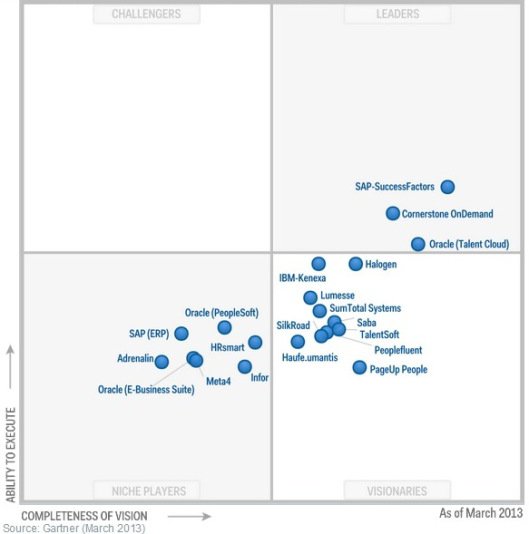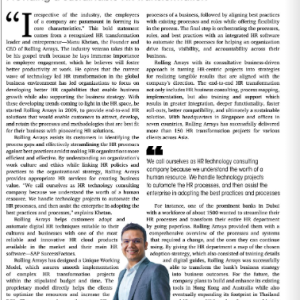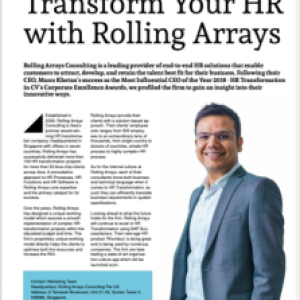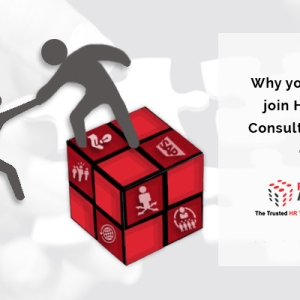Learning Management System (LMS)
Learning Management System (LMS)
[authorblog]
[postsociallinks]
 Over the past few decades, Learning Management System (LMS) has become one of the most critical applications for organizations that heavily depend on “humans” as their “key resource”.
Over the past few decades, Learning Management System (LMS) has become one of the most critical applications for organizations that heavily depend on “humans” as their “key resource”.
This article focuses on (a) Features and benefits of an LMS, (b) how to prepare a business case while purchasing an LMS, and (c) steps to evaluate and select an LMS.
Features and Benefits of LMS
An LMS helps to manage the administration, delivery, tracking and reporting of various learning events. Also it provides automation that replaces rigorous and expensive manual work, saves time, and enables you to organize your content, data, and learner audiences. It reports on data that can help you measure results and forecast demand.
An LMS helps in:
• Managing users, instructors, vendors, courses and generating reports
• Web-based course delivery
• Managing learning assignments and tracking their completion status
• Displaying course completion status, grades/scores to learners
• Messaging and notification to learners, supervisors, instructors etc.
• Conducting exams/quizzes to assess the learners
• Making and publishing training calendar
• Managing competency
• Managing commerce associated with learning
• Managing infrastructure, facility, equipment associated with learning
Most of the new-generation LMS heavily focuses on:
• Providing access to learning content from anywhere, using mobile applications
• Providing features that helps administrators in ensuring compliance
• Integrating social learning along with formal learning
• Managing web-based learning and content administration in an efficient manner
• Supporting most of the industry content standards, such as SCROM and AICC
• Providing comprehensive analytics for taking better decisions
• Making administration more powerful
Preparing Business Case
Despite the various benefits an LMS can provide, getting an approval for implementing LMS is challenging. Hence preparing a strong business case is very important in this process and following are key elements.
1. Present Hard Cost Savings
Showcase the various hard cost savings the organization gets by implementing LMS. Some examples are
a. Reduced (a) cost for travel and training facilities by moving training on-line, (b) time away from job, (c) record keeping costs, (d) cost for preparing, shipping, and storing and update course materials.
b. Improved (a) training efficiencies, (b) scheduling and enrolment efficiencies, (c) user experience, by reducing multiple systems to one centralized access point.
2. Estimate Top-Line Revenue Benefits
Showcase the various top-line revenue benefits the organization gets by implementing LMS. Some examples are
a. Improve (a) time-to-market : speed at which training can be delivered, which helping in ramping up the team faster at lower cost so that organization gets an edge over the competitors, (b) custom course creation and delivering : speed at which organization can create custom courses and assign to targeted audience
b. Give employees more time to do their jobs by offering “anywhere, just-in-time” training.
c. Reduce redundant and unnecessary efforts for administrators and improve their efficiency.
3. Calculate Initial ROI
Showcase the ROI based on the above inputs
[Hard Costs + Top Line Revenue Benefits] / Cost of the System = Return
Example:
Hard Cost Savings: $600,000
Top Line Revenue Benefits: $200,000
————————————————————————-
Sum of Benefits: $800,000
Less Cost of Investment: $200,000
————————————————————————-
Return Before Investment: $600,000
Return Before Investment: $600,000/
Cost of Investment: $200,000
————————————————————————-
Return: 3.0 (or 300%)
This means, for every $1.00 invested, you expect $3.00 benefits in return
[Investment / Sum of Hard Savings & Benefits] x Time Period = Payback Period
Example:
($200,000 / $800,000) x 12 Months = .25 x 12 Months = 3 Months or 90 Days
This means, the application would deliver 300% ROI and pay for itself in 90 days.
4. Highlight Strategic Benefits
Showcase the various strategic benefits the organization gets by implementing LMS. Some examples are
a. The benefits/ROI based on the ability to integrate with other HR Systems
b. The benefits based on the ability to reduce regulatory risks and liabilities
c. The benefits based on the ability to assign learning at faster rate, engaging & retaining employees, foster collaboration and consistency in process
d. Organization competency assessment and gap analysis
5. Highlight Individual Benefits
Showcase the various benefits the individuals get by implementing LMS. Some examples are
a. Ability for employees to manage their learning and career development, both immediate and long term
b. Ability to establish high performance and learning culture by including training goals during annual review
Steps to evaluate and select an LMS
Once the business case is approved, now then in front of an organization will be, “what are the steps to evaluate and select an LMS?” Here is a proven practice for selecting an LMS

Step 1: Need Analysis
a. The first major step is need analysis. Interview your leadership and conduct focus groups with stakeholders throughout the organization, to understand the business need.
b. Discuss with the training group to understand the various strategic, tactical and operational need which they expect the LMS application should support/
c. Work with internal IT Team to understand the technical needs and standards the LMS application should possess.
Step 2: Requirement Definition
a. Based on the analysis done, draft the requirements for your LMS. Categorize them under various headings like functional, technical and cost.
b. Ensure that you are drafting the need and not the solution. The clearer and more complete you draft the requirement, the easier to evaluate the product.
c. Each requirement should be discrete, without repeating or overlapping other requirements, and you should write it at the same broad-based level of detail.
d. Prioritize your requirements.
Step 3: Product Vetting
a. The first challenge is to narrow the choices to a short list of product from the numerous products available in the market. For that identify the top distinctive requirements that helps in rule out non-qualifying products.
b. Features like license model, license cost, pricing model/range, multi-language support, security restrictions, exams/quizzes development and deployment, etc. are some examples.
c. Once the features are identified, use that during product evaluation.
Step 4: Product Evaluation
This can be done in 6 steps
a. RFI (Request for Information)
i. This document should contain your requirements in detail
ii. The document is published to various LMS vendors
iii. The vendors should perform the feasibility check and should revert to you
b. Use Case Demonstration
i. The vendor should perform demo of the application
ii. This should include real time scenarios and how their product can cater your need
c. Sandbox or Trial Version
i. Request the vendor to share a test instance and request your Learning Team and IT Team to review the features.
ii. If possible, under a closed environment as end users to evaluate the product and get their feedback
d. Referrals
i. Look for referrals from organizations similar to your business, size and nature.
ii. Get inputs from renowned industry analysts like Gartner Group, Forrester Research etc. on the various products in the market.
e. Health
i. Check the financial reports of the vendor who is offering you LMS solution.
ii. Get inputs from renowned industry analysts like Gartner Group, Forrester Research etc.
iii. The strength of your vendor’s financial position and customer base helps ensure that the vendor will support your product well and will continue to evolve and improve with sufficient funding for product research and development.
f. Product Selection (RFP)
i. The final step is to settle on a product. Work on how you can negotiate for a better pricing model.
ii. Send request for proposal (RFP) to all finalist vendors.
iii. Work with your purchasing or procurement departments, if appropriate.
iv. Compare the responses, and don’t be afraid to go back to each vendor to ask them for a better price or more feature options comparable to incentives the other vendor finalists are offering.
To conclude, here is Gartner’s Magic Quadrant for Talent Management Suites.

Happy learning!
Courtesy: http://www.successfactors.com, http://www.gartner.com, http://www.learningsolutionsmag.com
Rolling Arrays is Asia’s premier award winning HR transformation company, headquartered in Singapore with offices in 6 countries. Since its inception in transformation projects for more than 50 blue-chip clients across Asia. A consultative approach to HR processes, HR functions and HR software is Rolling Arrays core expertise and the primary catalyst for its success.
[likeblogpostbutton] [sharethisbuttons]







